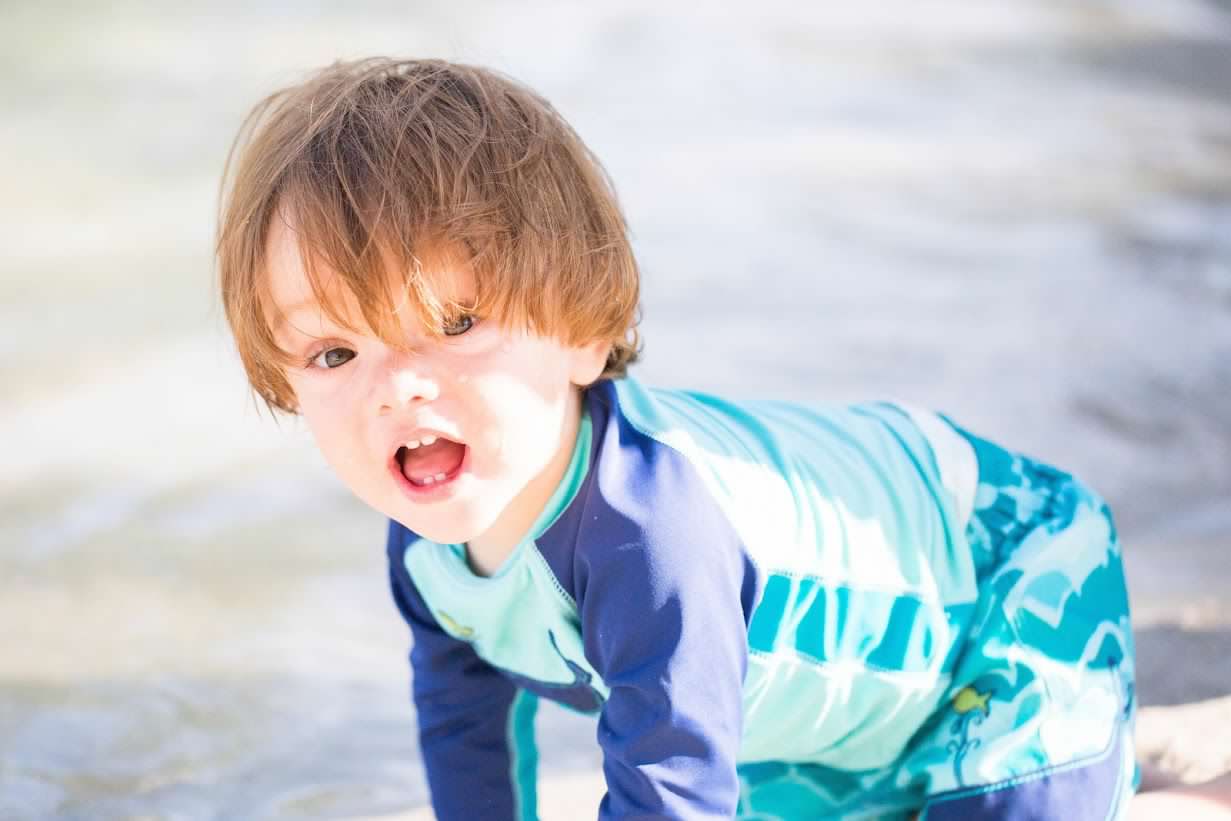
Leading the Way: An Interview with Franki Herrera
Although fear was a powerful motivator that led me to achieve great things, it also kept me from truly seeing the treasure my child is. Once I shifted from fear to love, I could celebrate who he really is — funny, smart, unique, and incredibly creative
Franki Herrera, Patient Advocate and 16p11.2 Foundation LeaderIn our “Leading the Way” series, we highlight the inspiring work of patient advocacy group (PAG) leaders. This month, we’re featuring Franki Herrera, Patient Advocate and 16p11.2 Foundation Leader. Franki shares her journey into rare disease advocacy, her leadership insights, and the incredible progress made by the 16p11.2 community.
1. Can you tell us a little about yourself, your family, and your journey into the world of patient advocacy?
I’m an Iranian American immigrant who grew up in Irvine, California, and studied Molecular Cell Biology at UC Berkeley in the late 90s. I met the love of my life, Daniel, on the first day of orientation, and we haven’t been apart since. Daniel is Mexican American, and we’ve always loved merging our cultures and celebrating our differences.
We married while I was in medical school and he was making video games for a living. We had our first child, Lia, during my internal medicine residency. After 15 beautiful years educating ourselves in the Bay Area, we moved back down to Southern California to be near family.
I started practicing primary care for a large medical group when Lia was 1. When she was 4, we had our son, Navin. We have continued to raise our beautiful children in Southern California and have fought tooth and nail to take care of each other ever since.
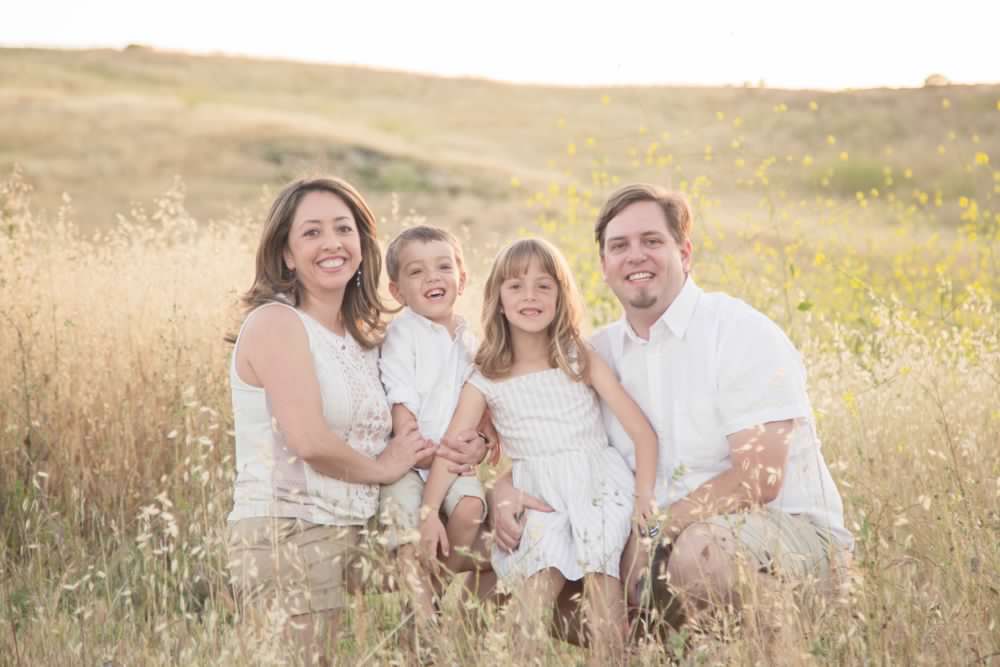
2. Can you share your experience with your child’s rare disease diagnosis and how you navigated through it as a parent?
When Navin was 2 months old, he began having breath-holding episodes where he would cry, be unable to take a breath, turn blue, and lose consciousness. He would then breathe, have seizure-like activity, and become lethargic. These episodes were horrific, and we constantly worried he wouldn’t breathe again despite being reassured that it was a benign condition he would eventually outgrow. They happened several times a week until he was 8. At the time, we didn’t realize that these episodes were part of a bigger condition.
When Navin was 2, he started having hypoglycemic episodes. On one occasion, his blood sugar dropped to 28 mg/dL (blood sugar below 70 mg/dL is considered low). His speech wasn’t developing, and he communicated more by gestures than words. Despite comfort from his doctors, we had a hunch that something more was going on. By age 3, we paid out of pocket to have him evaluated by a clinical pediatric neuropsychologist who initially diagnosed him with mild autism. She recommended genetic testing. We returned to our insurance carriers, and the diagnosis was confirmed. It took a lot of back and forth, but his genetic testing was ordered by the developmental pediatrician.
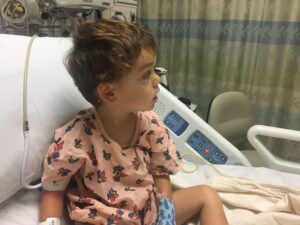 I recall the day she called with the results — I was sitting on the curb of a parking lot, waiting for my daughter to finish cross-country practice. The doctor told me that Navin has 16p11.2 deletion syndrome. It felt like she was just reading the results off the paper and honestly said she had no idea what it was. The lab had sent her a fax with information about an organization called Simons Searchlight. This was the start of our journey as a family.
I recall the day she called with the results — I was sitting on the curb of a parking lot, waiting for my daughter to finish cross-country practice. The doctor told me that Navin has 16p11.2 deletion syndrome. It felt like she was just reading the results off the paper and honestly said she had no idea what it was. The lab had sent her a fax with information about an organization called Simons Searchlight. This was the start of our journey as a family.
Looking back, I hardly recognize the people Daniel and I were when Navin was diagnosed. I can’t really describe the process of breaking and rebuilding that occurred. In our first meetings with the geneticist and neurologist, I quickly understood that the average provider doesn’t know or understand this condition. Overwhelmed, my modus operandi became to learn everything I could about 16p11.2 deletion. With a background in cell biology, public health, research, and medicine oriented toward prevention, I put everything else aside to find the right care for Navin — including processing my own grief.
Daniel saw that I was consumed by the overwhelming care that our son needed, and he tried his best to support me, but he also withdrew to deal with his own grief, which led to isolation. My over-functioning led me to turn over every stone — I read studies and contacted almost every principal investigator of every study. The one who responded with meaningful advice was Dr. Wendy Chung. She later became Navin’s geneticist, my mentor, co-author, and the Chief Medical Officer of our parent advocacy group. She advised me to seek care at local teaching universities, and I ended up at UCLA.
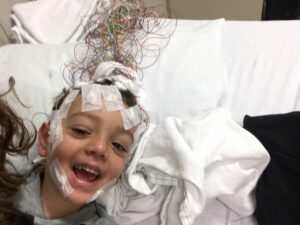 With their input and my research, we had to fight for every service. Navin started applied behavioral analysis (ABA), speech, occupational, and physical therapy during almost every waking hour. He had four hours of ABA three times a week at home, speech therapy twice a week, occupational therapy twice a week, and physical therapy once a week — all privately. He started preschool in our district’s early childhood learning center with an individualized education plan (IEP). He qualified based on speech and language impairment, but only after we hired an educational advocate to use the right terminology. He was placed in general education with pull-out and push-in services, including speech therapy, occupational therapy, and adapted physical education. We also pursued karate-based occupational therapy, hippotherapy, diet and nutritional interventions, Brain Balance™, and constant private tutoring.
With their input and my research, we had to fight for every service. Navin started applied behavioral analysis (ABA), speech, occupational, and physical therapy during almost every waking hour. He had four hours of ABA three times a week at home, speech therapy twice a week, occupational therapy twice a week, and physical therapy once a week — all privately. He started preschool in our district’s early childhood learning center with an individualized education plan (IEP). He qualified based on speech and language impairment, but only after we hired an educational advocate to use the right terminology. He was placed in general education with pull-out and push-in services, including speech therapy, occupational therapy, and adapted physical education. We also pursued karate-based occupational therapy, hippotherapy, diet and nutritional interventions, Brain Balance™, and constant private tutoring.
Daniel left his dream job to work in IT. I decreased my clinical hours and added a full-time nanny. We constantly struggled to keep pace. Navin was diagnosed with ADHD at 6 and started stimulants. He was also diagnosed with precocious puberty and started on anti-estrogen and growth hormone. We had 2 to 3 doctor’s appointments every week, and our family slowly started to erode.
Lia quickly learned to internalize everything and keep it to herself. I burned out trying to keep pace with my clinic of 2,500 patients. Daniel fell into a deeper hole of isolation, separated from his passions. Navin was constantly evaluated and treated. After 7 years of battling the school district with IEP meetings, Navin developed secondary anxiety from lack of support. He was in a class of 36 with one teacher. Despite worsening social and academic performance, he received high marks. He was bullied in kindergarten and began isolating himself, wandering on the periphery of social situations.
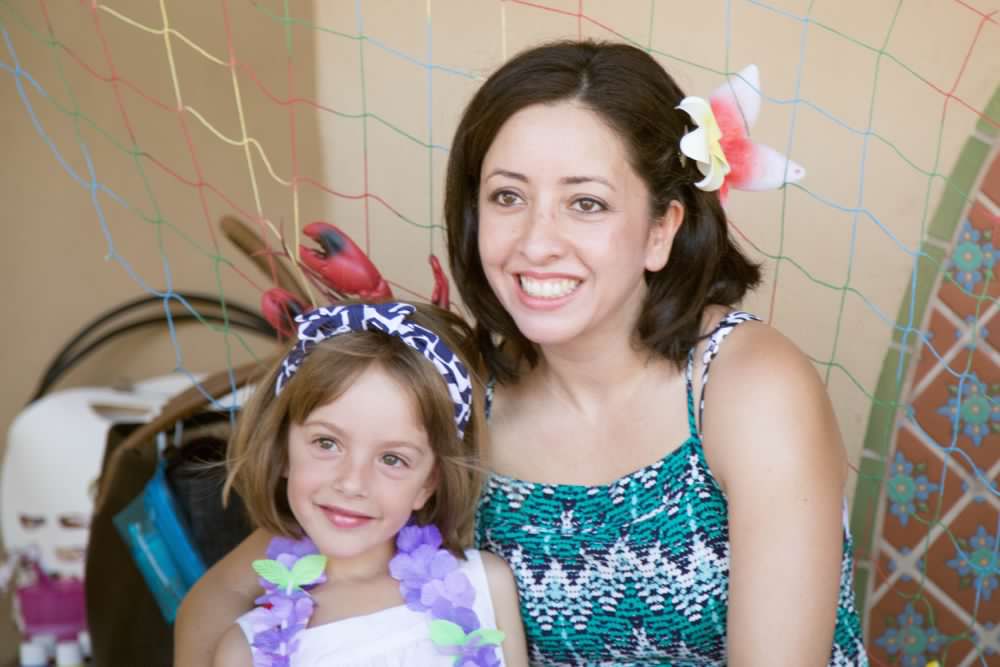
We moved Navin to a specialized school that focused on social skills in a highly supported classroom of 9 students with 3 teachers. Navin began to thrive academically and socially. We entered the legal system around education.
Sensing the erosion in our family unit, we leaned on our family foundation. Our love forced us to recognize and work on our blind spots. With support from our extended family, we had space to heal, and only then could we truly see each other. We discovered that Lia is highly sensitive and twice exceptional; Navin is a brilliantly imaginative creator; Daniel is a rock of patience and kindness; and I am a fierce fighter. We have grieved, and that has opened space for healing.
3. Your new leadership with the 16p11.2 Foundation has made a significant impact. What inspired you to take on this role?
I feel many seemingly random experiences in my life prepared me for this role. Being an immigrant, I always felt like I had one foot in each world. Growing up not speaking English, I deeply understand the frustration of not understanding or being understood. My interest in cellular biology and research experience gives me the language and ability to understand the science behind 16p11.2 deletion. My work with the United Nations and my master’s in public health, alongside public health research, provide insight into broader programs and policies that can benefit populations.
As a doctor seeing thousands of patients over a decade, I gained understanding of the fears and drivers of those facing health challenges — not only for patients but also their families. I’ve always felt that I learned more from my patients than I imparted. I’m also aware of the effort to build a certain life and the grief when it’s taken away — and the work needed to find peace.
But my greatest teacher has been my son, Navin. I have a front-row seat to observe the physiology of 16p11.2 deletion and how therapies yielded results, but also the strength of spirit. One of my first projects was writing a series of children’s books to explain genes, genetics, deletions, and general science in a way children can understand. I wanted to educate my own child and was fortunate to partner with another remarkable mom of a girl with 16p11.2 deletion. We met at a Simons Searchlight online conference — I wrote the science, she did the art. We struggled with whether to use our real names or pen names to protect our children’s identities. I chose the nerdy pen name “Dr. Nika Akid” (say it quickly and it sounds like deoxyribonucleic acid). I even got an official fictitious license through the California Medical Board.
When asked about this article a month ago, I mentioned it over dinner. My son immediately said, “Use your real name, Mom! I want to share this with the world!” I burst into tears. His genuine pride stunned me. As a parent, one of the unspoken worries is how much your child might suffer from an unknown and variable condition like 16p11.2 deletion. His pride was something I’d never dared hope for.
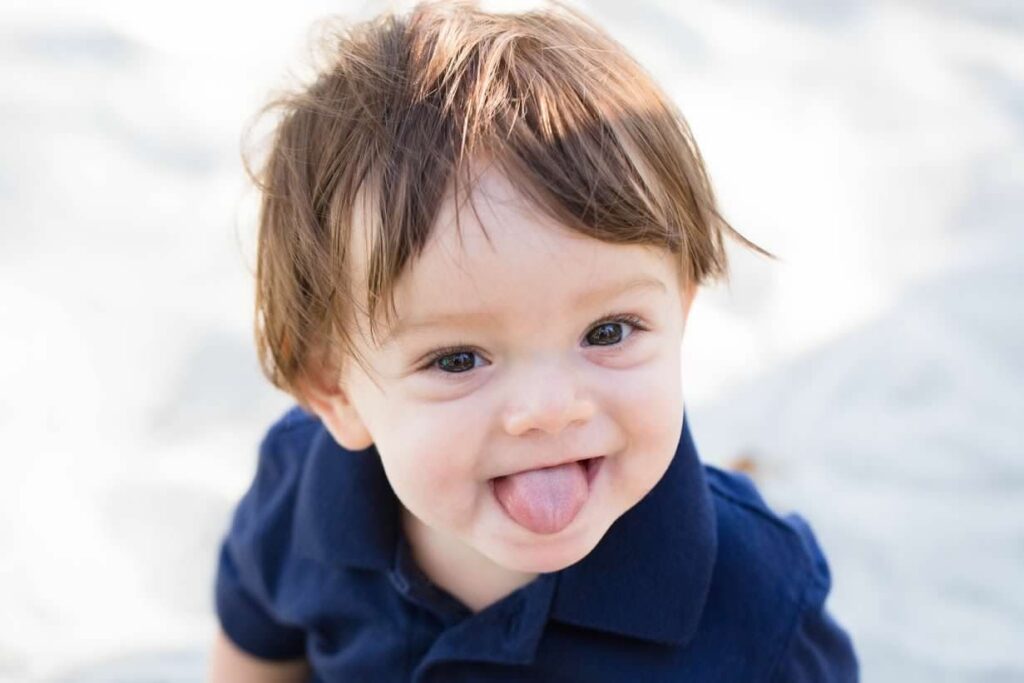
I retired from general practice two years ago, and though this path is unknown, I have no doubt that it’s where I need to be. I’ve been fortunate to know Dr. Chung and benefit from her ongoing guidance with Navin’s care. His IQ has increased by 3 standard deviations largely due to her support. She told me it’s rare to see such a positive trajectory in children with 16p11.2 deletion.
This raised important public health questions: Why was diagnosis so challenging? Why didn’t pediatricians or specialists recognize or treat it properly? Why are there no guidelines, standards of care, or treatments for a condition affecting so many? Why did I feel so alone? Finding these answers helped me process grief, and the foundation is how I’m making meaning of that grief. I see myself filling the gap between patients and care. I envision an organization that addresses these questions, and my ongoing connection with families continues to reveal new questions and answers.
4. Can you share a memorable moment or achievement from your time with the 16p11.2 Foundation that stands out? Why is it particularly significant?
One family I met was a young couple having their first child who, in addition to 16p11.2 deletion, had multiple serious medical issues. I deeply felt their fears, grief, and concerns, while also seeing a path to optimizing their baby’s care and maintaining their family’s integrity. This moment of connection and competence drives me to keep doing this work.
I often sacrifice hobbies to work on the foundation — my heart and soul are in it. But speaking of publications, having my name next to Dr. Chung on the clinical care guidelines for 16p11.2 deletion was a highlight of my life.
5. When organizing patient advocacy and research meetings or gatherings, what key lessons have you learned through this process (especially as you’re organizing your FIRST conference!)?
Don’t give up. It will work out as it’s meant to, even if you don’t know exactly how.
This conference was a bit rushed to coincide with the release of findings from the L16tHOUSE study, the first genuine clinical trial for a treatment targeting the 16p11.2 community. Beyond its medical significance, it’s a beacon of hope, illuminating a path forward and the possibility of helping our children.
The speed of community-building and organizing our first conference hasn’t been entirely organic. There were times we thought we’d need to cancel. But my connections with other patient advocacy group (PAG) leaders through Global Genes gave me the courage to push forward. I’m happy to report that all systems are go, and we look forward to a phenomenal gathering of families, researchers, and providers.
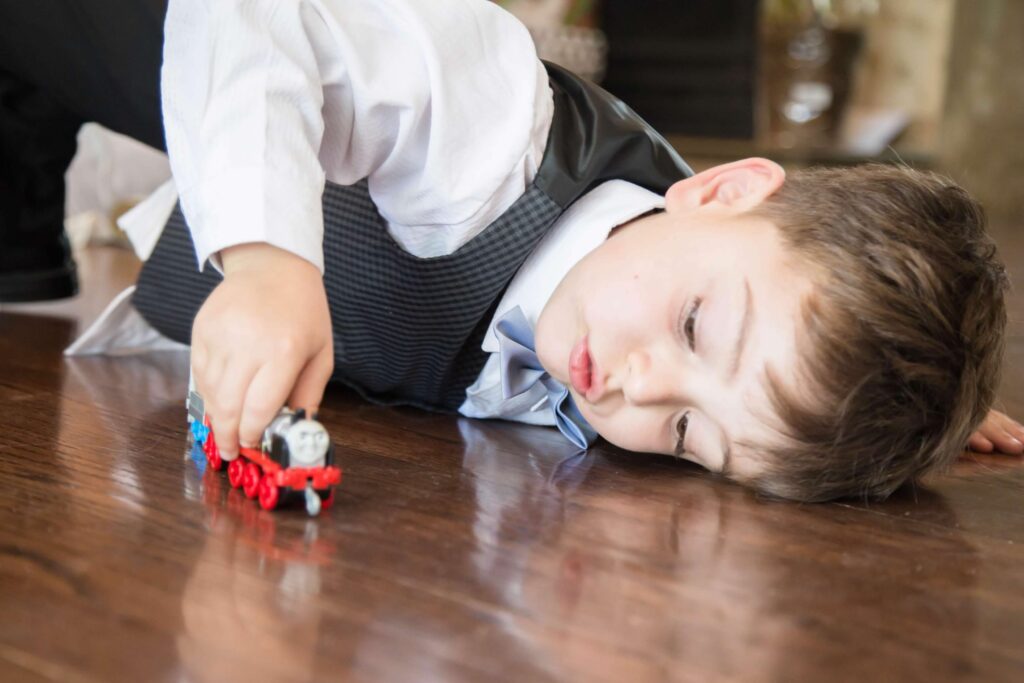
6. Could you provide insights into the challenges you’ve encountered while advocating for individuals with a 16p11.2 deletion? How have you managed to overcome these challenges, and what lessons have you learned along the way?
The greatest barrier I’ve encountered is a lack of knowledge among providers and administrators. As a doctor, my instinct is to educate myself and address that gap. But I’ve realized people handle “not knowing” differently. I see it as an opportunity to learn something new and exciting. For many, though, there’s shame or a tendency to dig in their heels on what they believe.
Those who see populations instead of people often remove empathy from their decisions. Those who remain curious about unknown situations and don’t rely on prior judgments have always acted in Navin’s best interest. I’ve come head-to-head with many administrators, and I’ve often lost in frustration. My only successes have been with those who remain curious — and by staying curious myself.
7. What resources or support networks have been most helpful in your role as a patient advocate and parent? Are there any tools or strategies you’d recommend to others?
My greatest source of personal growth as a parent has been fostering a community of highly intelligent, fiercely kind individuals from whom I ask for help. It’s a vulnerable space, but having a trusted community makes it possible.
In leadership and organizational support, the Global Genes PAG leadership seminars and the board of the 16p11.2 Genetic Foundation have been instrumental. For example, discussing a center of excellence with Wendy Chung, our CMO, and figuring out how to create and implement it was invaluable. Another example is working with Caroline Perriera, our CFO, on fundraising — the “how to” of that topic is foreign to me, and her guidance has been key to the foundation’s success.
There are so many parts to an organization, and no matter how brilliant you are in science or medicine, if you can’t manage the finances, the organization won’t reach the people it intends to serve.
8. How has Simons Searchlight been a resource for you and your community?
Simons Searchlight has been more than just a connective tissue for our community — it’s a beacon of hope. Its steady light shines onto the dark sea that families navigate while parenting a child with a rare disease.
Genetics and genes are the future of medicine, and Simons Searchlight’s focus on many genetic conditions, along with its commitment to scientific integrity, creates fertile soil for PAGs to flourish. The more severe a condition, the more families organize out of fear and urgent need. Simons Searchlight’s steady support gives PAGs credibility to organize out of love and hope for a better future.
This kind of self-selected triaging helps alleviate the broader burden of disease. The gratitude we owe to the original visionaries of Simons Searchlight, its contributors, and all who have kept its torch bright is immeasurable. Thank you for being you.
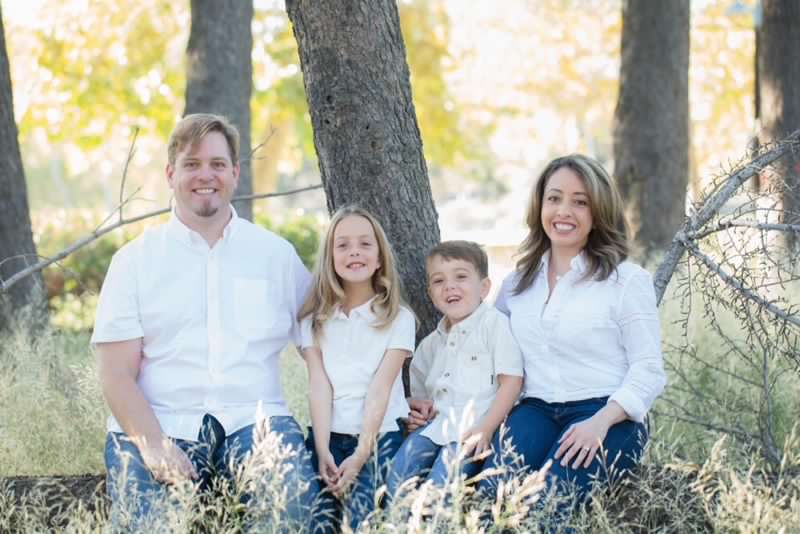
9. What is your mantra or source of motivation that keeps you going as both a parent and a patient advocacy leader?
When my son was diagnosed and I was still running a primary care practice, I had a young adult patient with 22q11.2 deletion syndrome (DiGeorge syndrome). She became my patient at 18 and I followed her journey until she was 27. She had a high school degree with a 3.8 GPA but could barely read. She was deemed able to work but her anxiety prevented her from talking to others. She weighed 400 pounds.
Despite my efforts to involve her family, help her qualify for services, and improve her medical co-morbidities, I made very little progress. My experience with her motivated me to push myself beyond my limits to prevent this for my own child.
Although that fear was a powerful motivator that led me to achieve great things, it also kept me from truly seeing the treasure that my child is. He’s funny, smart, unique, and incredibly creative. He sees the world in a way no one else does, and it will be his type of thinking that solves society’s future problems.
Once I realized this, and truly saw my child for who he is and celebrated him, my motivation shifted from fear to the love I have for him. At the end of the day, despite all the treatments and therapies, this is what we all want and need.
10. Is there anything else you would like to share with our community?
On a personal level, I hope we all learn to really see our entire family units and treasure the unique differences each of us possesses. Just as my fears blinded me to my son and his medical care, they also blinded me to my older daughter and who she is. When one child has great needs, it’s easy for urgent triaging to take over everyday life. My daughter is one of the wisest people I know, and I missed that for years.
When the fear of the unknown begins to quiet in one’s heart, more space is created for connection and enjoyment.
My greatest desire for this community is to address the fears of the unknown and tap into the collective wisdom of many individuals. If we come together out of love and hope, we will build a more lasting organization than if we organize only out of fear and urgent need.
I hope that when the 16p11.2 Genetic Foundation is running at full strength, we will be able to provide what is currently unknown so we can all thrive.
Stay connected with Simons Searchlight
Join our newsletter to receive updates
